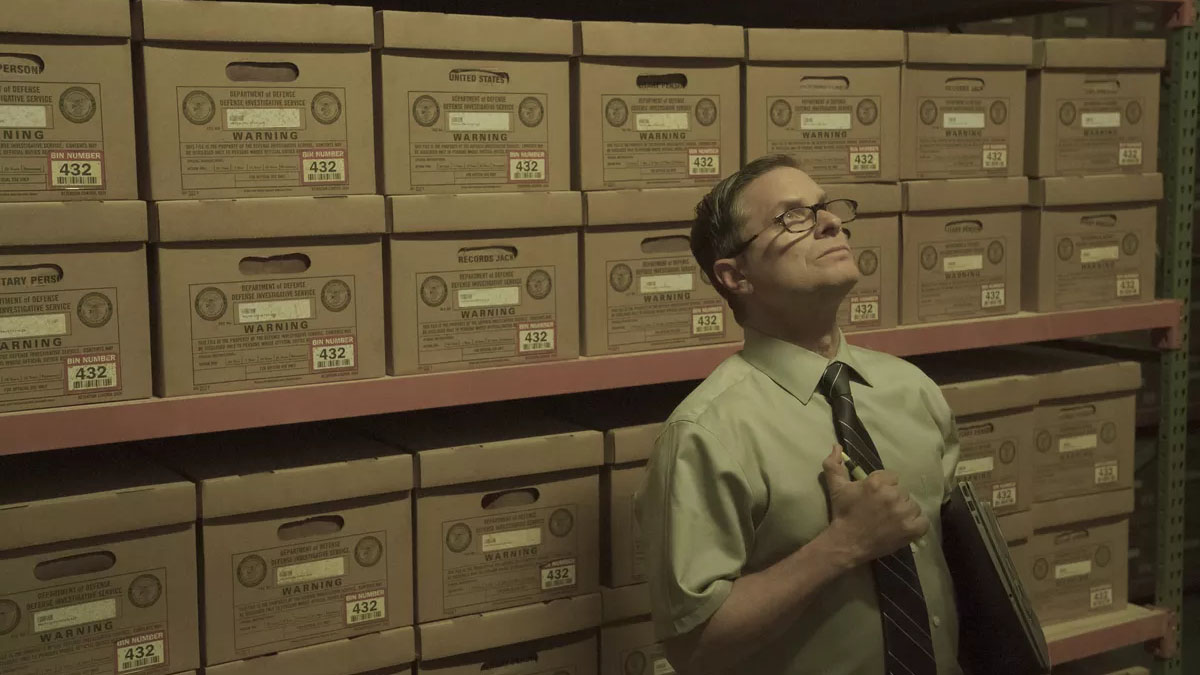Homecoming Review: An Engrossing Conspiracy Thriller
From the creator of Mr Robot and starring Julia Roberts, Amazon’s Homecoming thriller channels classic '70s paranoia…
Before it was a TV show starring Julia Roberts and Bobby Cannavale, Homecoming was an audio drama (or, if you insist, podcast) starring Catherine Keener and David Schwimmer. Two seasons have been released so far, telling the story of Heidi Bergman, a counsellor working at a facility helping to reintegrate traumatised veterans into society.
Amazon bought the rights and brought in Mr. Robot’s Sam Esmail to add pictures to Eli Horowitz and Micah Bloomberg’s story. By all accounts, after a faithful adaptation of the podcast’s first episode, he and the team have added a great deal more than just pictures. Heidi’s story has been both expanded and accelerated, while background elements have been developed in preparation for an already-commissioned second season (look out for a mid-credits scene in the finale that lays some groundwork for that).
It’s the pictures, though, that Esmail is known for. When Mr. Robot arrived in 2015, his use of unsettling composition and symbolic framing was as celebrated as the show’s boldly twisting story. Mr. Robot looked distinct, and so does Homecoming. That’s the Esmail effect.
With split-screen action and retro design, Homecoming’s distinct look is specifically that of a 1970s conspiracy flick. Esmail channels the period’s paranoid thrillers in color, lighting, and composition. He brings Mr. Robot cinematographer Tod Campbell with him, and the result is once again, TV made in a beautifully fluid visual language.
The consummate style isn’t only for the look of the thing. The cameras sweeping over the top of sets and looking down directly from above lend scenes a thematically apt sense of surveillance. Each of the ten episode’s closing credits play out almost in silence, watching a character continue an action long after we’d have expected a scene to be cut. It feels illicit, like we’re spying rather than being invited – perfect for the genre.

Playing out over two timelines set four years apart, Homecoming’s loudest visual trick is the use of two different aspect ratios. The 2018 scenes fill the screen, while those in 2022 are hemmed in by black bars. Even this easy shorthand has a thematic logic to it. Fittingly for this story, there’s always something else going on beneath appearances.
There’s no futuristic take on the world of 2022 either, quite the opposite. The four-years-later segments are flatter and more wan than their 2018 counterparts. The world doesn’t only resemble our own, it resembles our past.
That’s especially the case with Department of Defence worker Thomas Carrasco (Shea Whigham), who appears to have been pulled straight out of Three Days Of The Condor or something like it. The low-level government employee who sniffs a rat and goes hunting in a forest of bureaucracy and cover-ups, from his office cubicle to his search through fields of documents in storage, Carrasco’s everyman is an enjoyable throwback to the paranoid world of the 1970s conspiracy movie.
That’s far from the only cinematic echo here. Esmail’s style is wittily referential and evokes everything from The Twilight Zone to The Prisoner and One Flew Over The Cuckoo’s Nest, to those Watergate-era thrillers. His style is creative and packed with quotes – long shots and Hitchcockian zooms underline key plot moments.
The quotes aren’t just visual but also musical. Homecoming achieves a sense of the past with the use of existing film scores. Instead of having a modern composer ape the work of Bernard Herrman or Ennio Morricone, or, say, David Shire’s score to All The President’s Men, those pieces are all imported (including a neat moment from the Carrie theme in an episode featuring Sissy Spacek as Heidi’s mother). Like a lot of Esmail’s creative choices, it’s a little odd, but it really works. Memories of the scores’ original films layer up on the new scenes creating something that’s equally evocative and unsettling.
Speaking of unsettling, Bobby Cannavale is a terrific combination of sleaze and threat as Colin Belfast, Heidi’s boss at the Homecoming facility. Never too far from his Boardwalk Empire wiseguy persona, Cannavale is charismatic and imposing as Colin, even with his face painted like a cat for his daughter’s birthday party. He fills the screen and does a line in slick menace that’s both fun and chilling to watch.
The performances are key to Homecoming, because its storytelling spine is all about static conversations, as you might expect from a story that began life as an audio drama. There are lengthy monologues and dialogues, all of which are helped by Esmail and his team’s innovative framing choices.
We spend a great deal of the episodes (half-hours – what a joy in this age of runtime bloat) watching Heidi counselling one client in particular, Walter Cruz (Stephan James on the TV show, Oscar Isaac on the podcast). Recently returned from a tour overseas, Walter joins Homecoming as the perfect candidate. He’s clever, articulate, and looking ahead to his future.
Homecoming relies on Walter and Heidi’s chemistry, with scene after scene of the pair simply sitting and talking. The chemistry is there. Julia Roberts and Stephen James build a convincing sense of their character’s emotional bond, even if not every plot element in their story rings quite true.
Story-wise, Homecoming isn’t perfect. There are inconsistencies and contrivances in the final episodes, but those only float up once you’ve come down from the exhilarating rush of uncovering the first season’s mysteries. Those are what keeps you gripped.
The first two, to get you started: what is Homecoming? And: what is Homecoming really?
All ten half-hour episodes of Homecoming are available now on Amazon Prime Video. The complete list of Amazon Prime Video new releases can be found here.
